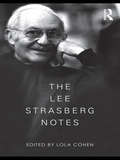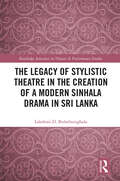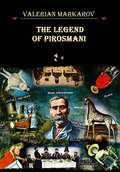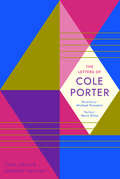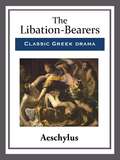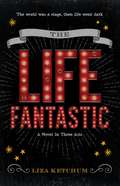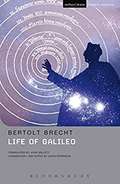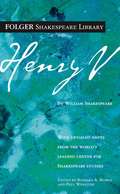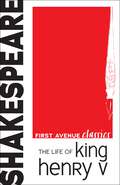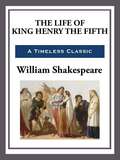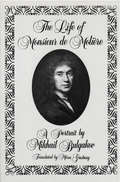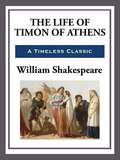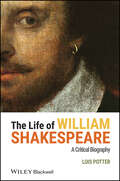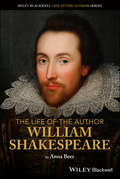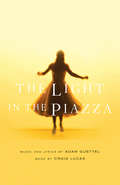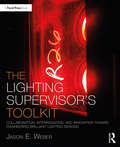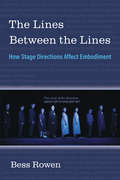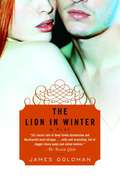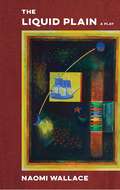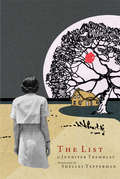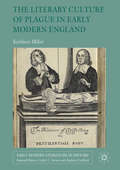- Table View
- List View
The Lee Strasberg Notes
by Lola CohenThe Lee Strasberg Notes reproduces the original teachings of a unique voice in actor training, for the very first time. It is a stunning document in the history and ongoing practice of Strasberg’s Method. Compiled and edited by Lola Cohen, the book is based on unpublished transcripts of Strasberg’s own classes on acting, directing and Shakespeare. It recreates his theoretical approach, as well as the practical exercises used by his students, and brilliantly conveys his approach and personality. The book features Strasberg’s teachings on: • Training and exercises • Characters and scenes • Directing and the Method • Shakespeare and Stanislavski • The theater, acting and actors. Including a Preface by Anna Strasberg and a Foreword by Martin Sheen, this illuminating book brings the reader closer to Strasberg’s own methods than any other, making it a phenomenal resource for students, actors, and directors.
The Legacy of Stylistic Theatre in the Creation of a Modern Sinhala Drama in Sri Lanka (ISSN)
by Lakshmi D. BulathsinghalaThis book explores the development of Sinhala stylistic drama from its earliest manifestations to the post-independence era.Bulathsinghala examines the impact of indigenous and imported folk theatrical forms on the work of the most significant postcolonial stylistic dramatists and on key plays that they produced. In the process, the book explores a number of myths and misunderstandings regarding Sri Lanka’s folk heritage and seeks to establish more reliable information on the principal indigenous Sri Lankan folk dramatic forms and their characteristics. At the same time, by drawing connections between folk drama and the post-independence stylistic theatrical movement, the author demonstrates the essential role of the former in Sinhala culture prior to the advent of Western and other influences and shows how both continue to inflect Sri Lankan drama today.This book will help to open the field of South Asian drama studies to an audience consisting not only of scholars and students but also of general readers who are interested in the fields of drama and theatre and Asian studies.
The Legend of Pirosmani
by Valerian MarkarovSometimes amazing people live next to us, whose existence, even before the end of their earthly days, becomes a legend. Such is a lot of the chosen. They, feeding the lofty ideas of humanity, hear, see and feel what is inaccessible to ordinary mortals, and we do not notice them, do not cherish them. Such a creator, whose name is surrounded by a halo of immortality, was Niko Pirosmani. The stories that are told about him, no one can confirm or deny. But they are his biography. He created it himself with his amazing life. A life that turned into a Legend about the Master. And we have no right not to believe her…
The Letters of Cole Porter
by Cole PorterThe first comprehensive collection of the letters of one of the most successful American songwriters of the twentieth century From Anything Goes to Kiss Me, Kate, Cole Porter left a lasting legacy of iconic songs including "You're the Top," "Love For Sale," and "Night and Day." Yet, alongside his professional success, Porter led an eclectic personal life which featured exuberant parties, scandalous affairs, and chronic health problems. This extensive collection of letters (most of which are published here for the first time) dates from the first decade of the twentieth century to the early 1960s and features correspondence with stars such as Irving Berlin, Ethel Merman, and Orson Welles, as well as his friends and lovers. Cliff Eisen and Dominic McHugh complement these letters with lively commentaries that draw together the loose threads of Porter&’s life and highlight the distinctions between Porter&’s public and private existence. This book reveals surprising insights into his attitudes toward Hollywood and Broadway, and toward money, love, and dazzling success.
The Liberation-Bearers
by AeschylusThis classic trilogy by the great tragedian deals with the bloody history of the House of Atreus. Grand in style, rich in diction and dramatic dialogue, the plays embody Aeschylus' concerns with the destiny and fate of both individuals and the state, all played out under the watchful eye of the gods.
The Life Fantastic: A Novel in Three Acts
by Liza KetchumAs seen in the Publishers Weekly African-American Titles for Young Readers feature! Will Teresa Find Fame But Lose Her Soul? It's 1913 and vaudeville is America's most popular form of entertainment. Thousands of theaters across the country host vaudeville troupes. In Brattleboro, Vermont, fifteen-year-old Teresa LeClair--who has a "voice like a nightingale"--remembers the thrill of singing onstage as a child. But her parents have given up life on the road, and her father has decided that Teresa, blessed with perfect pitch, should drop out of school and work in the tuning rooms of the organ factory. Determined to escape the life her father wants for her, Teresa wins an amateur singing contest in Brattleboro's opera house and steals away on the night train to New York. She hopes to become a star on Broadway's "Great White Way," but has no idea of the challenges that lie ahead. There she runs into Pietro Jones and his father, talented African American dancers. Teresa and Pietro become competitors as well as unlikely friends. At a time when young black men could be lynched for simply looking at a white girl, Pietro understands, better than Teresa, the danger of their relationship. Teresa's quest to find her voice onstage and in her life, far from the support of her family, takes place against a complex racial backdrop of American history.
The Life of Galileo (Methuen Student Editions)
by Bertolt Brecht John Willett Chris Megson Jenny Stevens Hugh RorrisonThis Student Edition of Brecht's classic dramatisation of the conflict between free enquiry and official ideology features an extensive introduction and commentary that includes a plot summary, discussion of the context, themes, characters, style and language as well as questions for further study and notes on words and phrases in the text. It is the perfect edition for students of theatre and literature Along with Mother Courage, the character of Galileo is one of Brecht's greatest creations, immensely live, human and complex. Unable to resist his appetite for scientific investigation, Galileo's heretical discoveries about the solar system bring him to the attention of the Inquisition. He is scared into publicly abjuring his theories but, despite his self-contempt, goes on working in private, eventually helping to smuggle his writings out of the country.
The Life of Henry V (Folger Shakespeare Library)
by William Shakespeare Barbara A. Mowat Paul WerstineA modern interpretation of Shakespeare's war play, this includes explanatory notes before each scene designed to help make Shakespeare's language clearer to a modern reader, and notes are placed on the page facing the text that they explain.
The Life of King Henry V (First Avenue Classics ™)
by William ShakespeareIn the wake of his father's death, Prince Henry has ascended to the throne as King Henry V. The rebels have finally been overthrown and the civil war has ended. Henry continues to distance himself from the disreputable friends of his youth in an effort to gain the respect of his subjects. After a dispute with the French over territory, Henry decides to invade France. The English fight their way across the country in a bloody series of conflicts that culminates in the legendary Battle of Agincourt. Will Henry be able to inspire the vastly outnumbered English soldiers on to victory against the French? First published in 1600, this unabridged version of William Shakespeare's history play is the fourth and final in his tetralogy about the rise of the English royal House of Lancaster.
The Life of King Henry the Fifth
by William ShakespeareHenry V is a history play by William Shakespeare, believed to have been written in approximately 1599. It tells the story of King Henry V of England, focusing on events immediately before and after the Battle of Agincourt (1415) during the Hundred Years' War. In the First Quarto text, it was entitled The Cronicle History of Henry the fift, which became The Life of Henry the Fifth in the First Folio text.
The Life of Monsieur de Molière: A Portrait by Mikhail Bulgakov
by Mirra Ginsburg Mikhail Afanasevich BulgakovThis portrait of Moliere, by Mikhail Bulgakov, goes far beyond mere biography. The Russian master brings a kindred spirit vividly to life in this novelistic story of art and the struggle it demands. Mikhail Bulgakov’s The Life of Monsieur de Moliere is a fascinating portrait of the great French seventeenth-century satirist by one of the great Russian satirists of our own century. For Bulgakov, Moliere was an alter ego whose destiny seemed to parallel his own. As Bulgakov’s translator, Mirra Ginsburg, informs us: "There is much besides their craft that links these two men across the centuries. Both had a sharp satirical eye and an infinite capacity for capturing the absurd and the comic, the mean and the grotesque: both had to live and write under autocracies: both were fearless and uncompromising in speaking of what they saw, evoking storms with each new work: and shared what Bulgakov calls ’the incurable disease of passion for the theater.’ The life of Moliere, born Jean-Baptiste Poquelin, is a story of struggle and dedication, and Bulgakov tells it with warmth and compassion. Indeed, for all Bulgakov’s careful attention to historical detail, his vivid recreation of seventeenth-century France makes The Life of Monsieur de Moliereread more like a novel than a formal biography. Mikhail Bulgakov (1891-1949) is best known in the West for his monumental novel The Master and Margarita. His The Life of Monsieur de Moliere, completed in 1933, was not published until 1962. Mirra Ginsburg’s translation of this neglected masterpiece will find a welcome readership among devotees of the theater and of modern Russian literature.
The Life of Timon of Athens
by William ShakespeareTimon of Athens is a bitterly intriguing study of a fabulously rich man who wastes his wealth on his friends, and, when he is finally impoverished, learns to despise humanity with a hatred that drives him to his grave. The play's plot structure is schematically clear, and the poetry of Timon's rage is arresting in its savage intensity. Yet readers have often detected loose ends, and the tone of writing is uneven.
The Life of William Shakespeare
by Lois PotterThe Life of William Shakespeare is a fascinating and wide-ranging exploration of Shakespeare's life and works focusing on oftern neglected literary and historical contexts: what Shakespeare read, who he worked with as an author and an actor, and how these various collaborations may have affected his writing. Written by an eminent Shakespearean scholar and experienced theatre reviewer Pays particular attention to Shakespeare's theatrical contemporaries and the ways in which they influenced his writing Offers an intriguing account of the life and work of the great poet-dramatist structured around the idea of memory Explores often neglected literary and historical contexts that illuminate Shakespeare's life and works
The Life of the Author: William Shakespeare (The Life of the Author)
by Anna BeerDiscover an invigorating new perspective on the life and work of William Shakespeare The Life of the Author: William Shakespeare delivers a fresh and exciting new take on the life of William Shakespeare, offering readers a biography that brings to the foreground his working life as a poet, playwright, and actor. It also explores the nature of his relationships with his friends, colleagues, and family, and asks important questions about the stories we tell about Shakespeare based on the evidence we actually have about the man himself. The book is written using scholarly citations and references, but with an approachable style suitable for readers with little or no background knowledge of Shakespeare or the era in which he lived. The Life of the Author: William Shakespeare asks provocative questions about the playwright-poet’s preoccupation with gender roles and sexuality, and explores why it is so challenging to ascertain his political and religious allegiances. Conservative or radical? Misogynist or proto-feminist? A lover of men or women or both? Patriot or xenophobe? This introduction to Shakespeare’s life and works offers no simple answers, but recognizes a man intensely responsive to the world around him, a playwright willing and able to collaborate with others and able to collaborate with others, and, of course, his exceptional, perhaps unique, contribution to literature in English. The book covers the entirety of William Shakespeare’s life (1564-1616), taking him from his childhood in Stratford-upon-Avon to his success in the theatre world of London and then back to his home town and comfortable retirement. The Life of the Author: William Shakespeare sets his achievement as a writer within the dangerous, vibrant cultural world that was Elizabethan and Jacobean England, revealing a writer’s life of frequent collaboration, occasional crisis, but always of profound creativity. Perfect for undergraduate students in Literature, Drama, Theatre Studies, History, and Cultural Studies courses, The Life of the Author: William Shakespeare will also earn a place in the libraries of students interested in Gender Studies and Creative Writing.
The Light in the Piazza
by Craig Lucas Adam Guettel"The Light in the Piazza beautifully captures the eternal allure of Italy. . . . The story wraps itself around your heart."--Chicago Sun-Times"Guettel's music and lyrics take nothing from the razzle-dazzle bargain basement of feeling; they represent, instead, a genuine expense of spirit. . . . The Light in the Piazza doesn't want to make theatre-goers feel good; it wants to make them feel deeply."--The New Yorker"With Adam Guettel's gorgeous melodies, a compelling narrative hook from Craig Lucas, and moving themes about happiness and risk, there's no question that The Light in the Piazza is Broadway worthy."--Daily VarietyComposer Adam Guettel, best known for his Floyd Collins, has teamed with Prelude to a Kiss playwright Craig Lucas to create a passionate and soaring new musical based on Elizabeth Spencer's 1960 novella, which was first published as an entire issue of The New Yorker. It is the story of an American ingénue abroad, whose chance meeting of a charming young Italian in a Florentine piazza sets off a whirlwind romance--with an unsettling revelation. The Light in the Piazza opens on Broadway at the Lincoln Center Theater this spring after major productions already in Seattle and Chicago.Adam Guettel wrote music and lyrics for Floyd Collins, produced across the country and in London. His other works include Love's Fire, a collaboration with John Guare, and Saturn Returns, a concert at The Public Theater/New York Shakespeare Festival that was recorded by Nonesuch Records under the title Myths and Hymns.Craig Lucas won this year's Obie Award for Best American Play for Small Tragedy and the New York Film Critics Award for Best Screenplay for The Secret Lives of Dentists. His other plays include Reckless, Blue Window, Prelude to a Kiss, God's Heart, The Dying Gaul, Missing Persons, Stranger, and Singing Forest.
The Lighting Supervisor's Toolkit: Collaboration, Interrogation, and Innovation toward Engineering Brilliant Lighting Designs (The Focal Press Toolkit Series)
by Jason E. WeberThe Lighting Supervisor’s Toolkit guides readers through the Lighting Supervisor’s production process with an emphasis on the importance of the collaborative nature of the role. Lifting the veil on a process regularly learned on the job, this book offers a deeper understanding of the role of Lighting Supervisor and how to take lighting designs from dreams to reality. Readers will learn to communicate with designers, analyze drawings, plan installations, document decisions, supervise crews, and innovate out-of-the-box solutions. Providing guidance for technically focused individuals seeking deeper understanding of the profession, The Lighting Supervisor’s Toolkit is ideal for students and professional technicians looking to take on important leadership roles in theatrical and entertainment lighting.
The Lilies of the Field
by William BarrettAn African American Baptist, German nuns and God can do anything.
The Lines Between the Lines: How Stage Directions Affect Embodiment
by Bess RowenWhat is the purpose of a stage direction? These italicized lines written in between the lines of spoken dialogue tell us a great deal of information about a play's genre, mood, tone, visual setting, cast of characters, and more. Yet generations of actors have been taught to cross these words out as records of previous performances or signs of overly controlling playwrights, while scholars have either treated them as problems to be solved or as silent lines of dialogue. Stage directions can be all of these things, and yet there are examples from over one-hundred years of American playwriting that show that stage directions can also be so much more. The Lines Between the Lines focuses on how playwrights have written stage directions that engage readers, production team members, and scholars in a process of embodied creation in order to determine meaning. Author Bess Rowen calls the products of this method “affective stage directions” because they reach out from the page and affect the bodies of those who encounter them. Affective stage directions do not tell a reader or production team what a given moment looks like, but rather how a moment feels. In this way, these stage directions provide playgrounds for individual readers or production teams to make sense of a given moment in a play based on their own individual cultural experience, geographic location, and identity-markers. Affective stage directions enable us to check our assumptions about what kinds of bodies are represented on stage, allowing for a greater multitude of voices and kinds of embodied identity to make their own interpretations of a play while still following the text exactly. The tools provided in this book are as useful for the theater scholar as they are for the theater audience member, casting director, and actor. Each chapter covers a different function of stage directions (spoken, affective, choreographic, multivalent, impossible) and looks at it through a different practical lens (focusing on actors, directors, designers, dramaturgs, and readers). Every embodied person will have a slightly different understanding of affective stage directions, and it is precisely this diversity that makes these stage directions crucial to understanding theater in our time.
The Lion in Winter: A Play
by James E. GoldmanThis superior drama charts a doomed love triangle backwards through time. More than a study in style this astonishing story is a passionate, mysterious play about memory, illusion and love.
The Liquid Plain (TCG Edition)
by Naomi Wallace"American theater needs more plays like Naomi Wallace's The Liquid Plain--by which I mean works that are historical, epic and poetic, that valorize the lives of the poor and oppressed."--Time Out New YorkOn the docks of late eighteenth-century Rhode Island, two runaway slaves find love and a near-drowned man. With a motley band of sailors, they plan a desperate and daring run to freedom. As the mysteries of their identities come to light, painful truths about the past and present collide and flow into the next generation. Acclaimed playwright Naomi Wallace's newest work brings to life a group of people whose stories have been erased from history. Told with lyricism and power, The Liquid Plain was awarded the 2012 Horton Foote Prize for Promising New American Play. This sweeping historical saga has enjoyed acclaimed runs at Oregon Shakespeare Festival and the Signature Theatre in New York.Naomi Wallace is a playwright from Kentucky. Her plays, which have been produced in the United Kingdom, Europe, the United States, and the Middle East, include In the Heart of America, Slaughter City, One Flea Spare, The Trestle at Pope Lick Creek, Things of Dry Hours, The Fever Chart: Three Visions of the Middle East, And I and Silence, The Hard Weather Boating Party , and The Liquid Plain. Awards include the Susan Smith Blackburn Prize (twice), Joseph Kesselring Prize, Fellowship of Southern Writers Drama Award, Obie Award, Horton Foote Award for Most Promising New American Play, MacArthur Fellowship, and the inaugural Windham Campbell Prize for Drama.
The List
by Jennifer Tremblay Shelley TeppermanShe keeps a tight list and doesn't let anything go unchecked, except for one important misplaced item: a favour to her neighbour. With this broken promise, a series of events unfolds that lead to her friend's death. Was the death preventable had the task been completed? A Governor General's Literary Award–winning play, The List is the riveting story of a woman haunted by internal regret when she fails to critically prioritize her world.
The Literary Culture of Plague in Early Modern England
by Kathleen MillerThis book is about the literary culture that emerged during and in the aftermath of the Great Plague of London (1665). Textual transmission impacted upon and simultaneously was impacted by the events of the plague. This book examines the role of print and manuscript cultures on representations of the disease through micro-histories and case studies of writing from that time, interpreting the place of these media and the construction of authorship during the outbreak. The macabre history of plague in early modern England largely ended with the Great Plague of London, and the miscellany of plague writings that responded to the epidemic forms the subject of this book.
